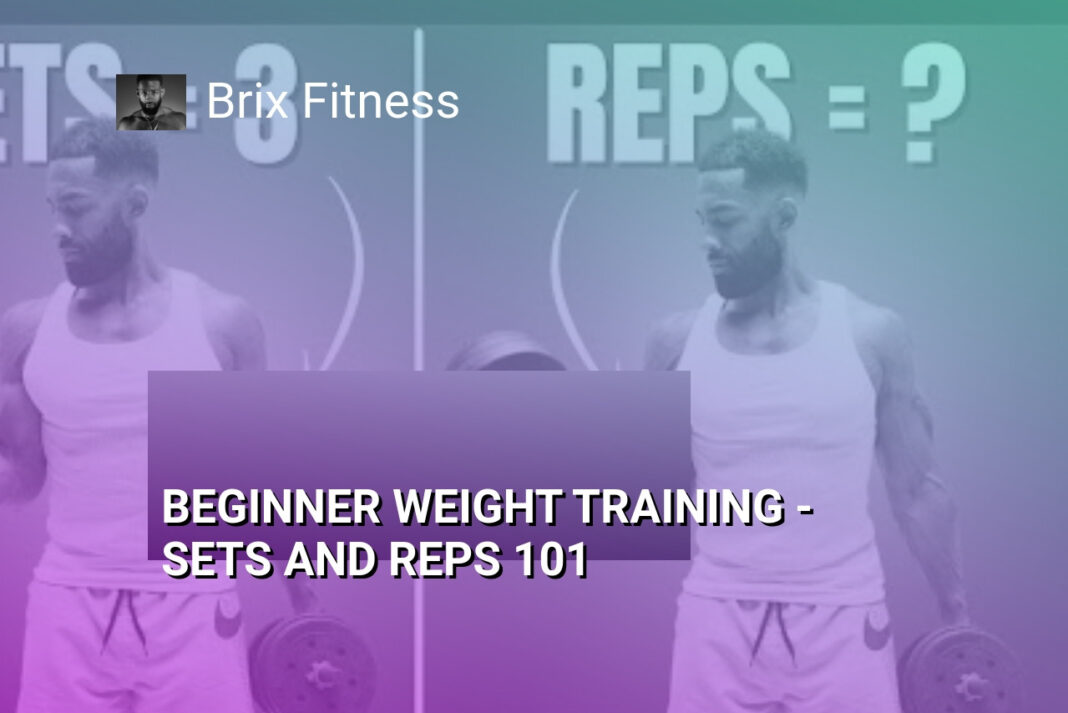The Bottom Line:
- In this video, the speaker provides a comprehensive guide on reps and sets for beginner weightlifters, emphasizing the importance of understanding these fundamental concepts to make your training more effective.
- The speaker introduces a sample workout from their 12-week transformation Jump Start program, highlighting the structure of a well-designed workout routine, including the warm-up, main exercises, and recommended rep ranges and rest periods.
- The speaker explains the different rep ranges (12-15 for endurance, 8-12 for muscle building, and 1-8 for strength) and the inverse relationship between the number of reps and the rest time required between sets.
- The speaker advises beginners to start with the 12-15 rep range to focus on proper form and technique, before gradually transitioning to the 8-12 rep range for fat loss and muscle building.
- The speaker emphasizes the importance of consistency, mastering the basic foundational exercises, and following a structured plan to stay motivated and achieve your fitness goals.
Understanding Reps and Sets
Mastering Reps and Sets: The Key to Effective Weightlifting
Understanding the relationship between reps and sets is essential for designing an effective weightlifting routine. Reps, or repetitions, refer to the number of times you perform a specific exercise, while sets are the groups of reps you complete with a given weight before resting.
Choosing the Right Rep Range
There are typically three main rep ranges used in weightlifting: 12-15 reps for endurance, 8-12 reps for muscle building (hypertrophy), and 1-8 reps for strength. The number of reps you choose will depend on your specific training goals.
If you’re new to weightlifting or working on your form, it’s best to start in the 12-15 rep range with lighter weights. This will allow you to focus on proper technique without risking injury. Once you’ve mastered the movement patterns, you can gradually increase the weight and decrease the reps to target muscle growth or strength.
Balancing Rest and Intensity
The amount of rest you take between sets is inversely related to the number of reps you perform. For lower rep ranges (1-8 reps), you may need up to 5 minutes of rest to fully recover. In contrast, higher rep ranges (12-15 reps) only require 30-45 seconds of rest.
Paying close attention to your rest periods is crucial for maintaining the desired intensity throughout your workout. If you can’t recover in less than 60 seconds, you may need to reduce the weight to keep your heart rate elevated and continue burning fat.
Ultimately, mastering reps and sets is about finding the right balance between weight, reps, and rest to achieve your specific fitness goals. By following a well-structured program and consistently tracking your progress, you’ll be on your way to building the body you want.
Structuring a Balanced Workout
Mastering Proper Technique and Progression
Proper form is crucial when engaging in weightlifting exercises, as it not only maximizes the effectiveness of the workout but also helps prevent injury. As a beginner, it’s important to prioritize mastering the movement patterns before attempting to lift heavier weights. Start with lighter loads and focus on executing the exercises with perfect technique. This will help ingrain the correct movement patterns into your nervous system, laying a strong foundation for future progress.
Balancing Strength, Hypertrophy, and Endurance
Weightlifting programs can be tailored to target different goals, such as building strength, muscle hypertrophy (growth), or endurance. Each of these objectives requires a specific approach to reps and sets. For building strength, aim for lower rep ranges (1-8 reps) with longer rest periods (up to 5 minutes). To stimulate muscle growth, the 8-12 rep range with moderate rest (60-90 seconds) is often recommended. If endurance is the focus, higher rep ranges (12-15 reps) with shorter rest periods (30-45 seconds) can be beneficial.
Structuring a Balanced Workout
When designing a well-rounded weightlifting routine, it’s important to include a variety of exercises that target all the major muscle groups. A typical full-body workout might include exercises such as the barbell squat, deadlift, bench press, pull-up, shoulder press, and core-focused movements like the plank or Russian twist. Aim to perform 5-8 exercises per workout, with 3-4 sets of 8-15 repetitions for each exercise. Adjust the weight and rest periods based on your specific goals and training experience.
Remember, consistency and patience are key when embarking on a weightlifting journey. Stick to a structured plan, focus on proper form, and gradually increase the challenge as you become more experienced. This balanced approach will help you achieve your fitness goals while minimizing the risk of injury.
Choosing the Right Weight and Rep Range
Mastering Weight and Repetition Ranges
When it comes to weightlifting, understanding the right weight and repetition (rep) range is crucial for achieving your fitness goals. Whether you’re aiming for strength, muscle building, or endurance, the appropriate weight and rep range can make all the difference.
Strength Training: The Low-Rep Approach
For those seeking to build strength, the low-rep range, typically between 1 to 8 reps, is the way to go. This range is designed to help you lift heavier weights and develop greater overall strength. When training for strength, you’ll want to rest for longer periods, up to 5 minutes, between sets to allow your muscles to fully recover.
Muscle Building: The Hypertrophy Range
If your goal is to build muscle mass, the hypertrophy range of 8 to 12 reps is the sweet spot. This rep range allows you to challenge your muscles while maintaining good form and keeping your heart rate elevated. The rest periods between sets should be shorter, around 30 to 60 seconds, to keep the intensity high and promote muscle growth.
Endurance: The High-Rep Approach
For those focused on endurance, the 12 to 15 rep range is the way to go. This higher-rep range helps to build muscular endurance and cardiovascular fitness. The rest periods between sets should be shorter, around 30 to 45 seconds, to keep your heart rate elevated and maintain the endurance-focused training.
Regardless of your specific goals, it’s important to pay close attention to your form and start with lighter weights, especially if you’re new to weightlifting. Mastering the movement patterns and building a strong foundation will help prevent injuries and set you up for long-term success.
Remember, the key to choosing the right weight and rep range is to listen to your body and experiment. Start with a weight that allows you to complete the desired number of reps with good form, and then gradually increase the weight as you get stronger. By finding the right balance between weight and reps, you’ll be well on your way to achieving your fitness goals.
Fundamental Exercises for Beginners
Mastering Fundamental Exercises for Beginners
As a beginner weightlifter, it’s crucial to focus on mastering the fundamental exercises that will form the foundation of your training. These exercises not only help build strength and muscle but also ensure proper form and technique, reducing the risk of injury.
The Essentials: Compound Movements
The core exercises you should prioritize as a beginner include the barbell squat or goblet squat, the deadlift (standard or Romanian), the bench press (flat or incline, with barbells or dumbbells), the barbell row, and the pull-up or chin-up. These compound movements engage multiple muscle groups simultaneously, allowing you to build overall strength and muscle mass efficiently.
Developing Proper Technique
When starting your weightlifting journey, it’s essential to prioritize proper form over the amount of weight you can lift. Begin with lighter weights and focus on mastering the movement patterns. You can record yourself and compare your form to online tutorials to ensure you’re executing the exercises correctly. This will help you build good habits and prevent injury in the long run.
As you progress, you can gradually increase the weight while maintaining proper form. Remember, the goal is not to lift the heaviest weights, but to build a solid foundation that will support your long-term progress and development.
By consistently practicing these fundamental exercises and prioritizing proper technique, you’ll lay the groundwork for a successful and sustainable weightlifting journey. Stick to these exercises, repeat the same routines, and track your progress to ensure you’re making steady improvements over time.
Consistency and Progression: The Keys to Success
Mastering Progression: The Key to Consistent Gains
Consistency is the cornerstone of any successful weightlifting journey. It’s not enough to simply show up and go through the motions; true progress comes from a steadfast commitment to your training program. The key lies in progressive overload – the gradual increase in the demands placed on your body over time.
Tracking Your Progress: The Power of Measurable Goals
Monitoring your progress is essential for maintaining motivation and ensuring that your efforts are yielding tangible results. Whether it’s the amount of weight you’re lifting, the number of reps you can complete, or the time it takes to recover between sets, keeping detailed records will allow you to identify areas of improvement and make adjustments to your program as needed.
Embracing the Grind: Consistency Trumps Intensity
Weightlifting is a marathon, not a sprint. While it’s tempting to push yourself to the limit in every workout, sustainable progress requires a more measured approach. Focus on building a solid foundation through consistent, moderate-intensity training, rather than burning out with sporadic bursts of high-intensity effort. Patience and perseverance will be your greatest allies on this journey.





